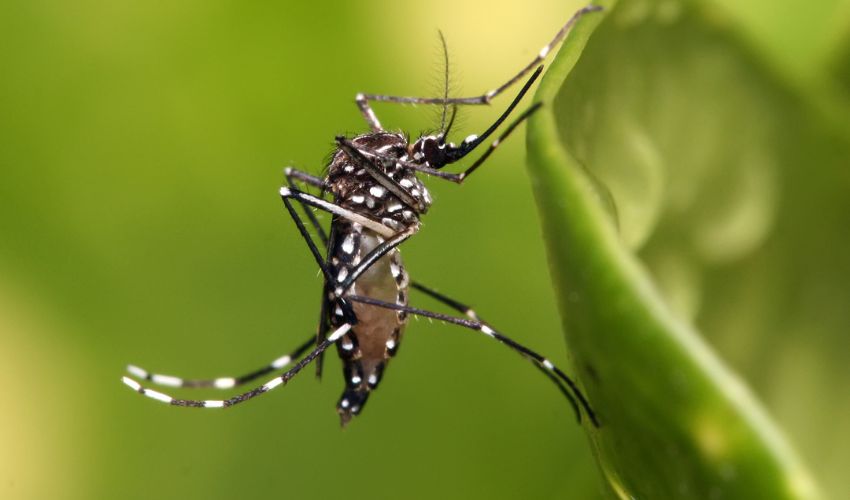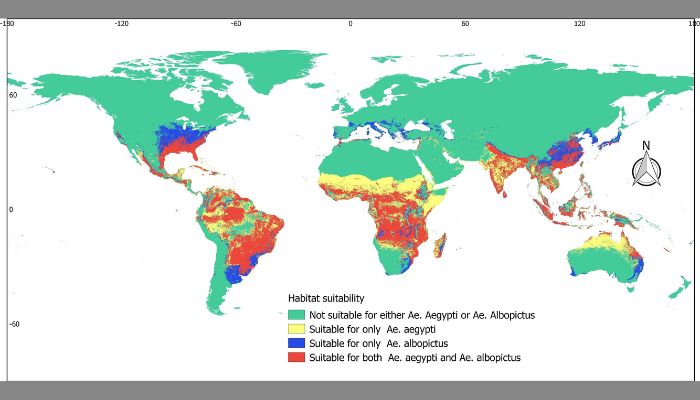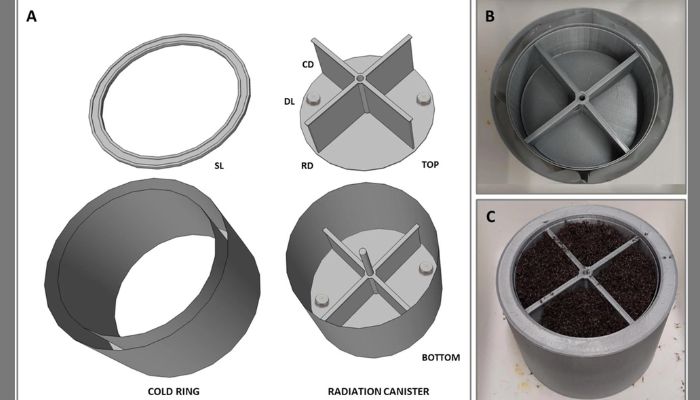Coolable 3D Printed Canister Could Help Prevent the Spread of Disease-Carrying Mosquitoes

Do you know what the most dangerous animal on the planet is? Contrary to common expectations it is not lions, hippos, sharks or any other predator creators. Rather, it is the common mosquito. On average, mosquitos kill about 750,000 people per year due to the diseases that they carry. This is why stopping them has become a priority worldwide, but many solutions are also toxic. Now researchers claim to have created a coolable 3D printed canister that can mass sterilize Aedes aegypti mosquitoes, thus significantly reducing their spread and therefore the harm that they can do, all in a more sustainable way.
Aedes aegypti, which is more commonly known as the yellow fever mosquito, is known for spreading dengue fever, zika and yellow fever, among other serious diseases. Moreover, though it originated in Africa, it can now be found in tropical, subtropical and temperate regions worldwide, greatly increasing its range and ability to cause havoc. For example, in the United States, the CDC estimates that Aedes aegypti can live and reproduce across most of the south of the country, up to New Jersey and going all the way to California. Meanwhile, in Europe, the European Centre for Disease Prevention and Control has put out bulletins warning about the northwards and westwards spread of the mosquito as summers are becoming longer and warming and flooding is becoming more frequent.

The range of the yellow fever mosquito (Image Credits: Samson Leta, Tariku Jibat Beyene, Eva M. De Clercq, Kebede Amenu, Moritz U.G. Kraemer, Crawford W. Revie, International Journal of Infectious Diseases)
This is a cause for serious concern, as the diseases that are spread are not easy to combat. Andrea Ammon, ECDC Director, further explained, “In recent years we have seen a geographical spread of invasive mosquito species to previously unaffected areas in the EU/EEA. If this continues, we can expect to see more cases and possibly deaths from diseases such as dengue, chikungunya and Zika viruses and, under certain circumstances*, West Nile virus. Efforts need to focus on ways to control mosquito populations, enhancing surveillance and enforcing personal protective measures.”
And it is these very efforts that are the core of this study, which comes from the Insect Pest Control Laboratory in the Joint FAO/IAEA Centre of Nuclear Techniques in Food and Agriculture, located in Vienna, Austria. By making a coolable 3D printed canister, the researchers have shown that it is possible to compact, immobilize and hold around 100,000 adult mosquitoes and then sterilize them. This mass radiation sterilization has been found to be a safe and environmentally-friendly way to suppress and eradicate major insect pest populations, like the rapidly spreading Aedes aegypti.
Making the 3D Printed Canister
But how was this canister created? The 3D printed circular canister consists of two overlapping compartments which are inserted inside an external cold ring and ensuring sustained chilling through the canister. The Aedes adult males that were immobilized by the cold (preventing them from escaping) were then subject to irradiation treatments, with the cold ring greatly increasing the survival rate of the mosquitoes. Results showed that fertility was reduced thanks to the irradiation and that by combining it with the coolable canister, it could be possible to facilitate mass irradiation procedures in so-called sterile insect technique (SIT) programs.
In terms of the actual 3D printing, it was made using PLA and an UltiMaker S3 3D printer. In the design, in addition to the two staked compartments, it was necessary to have four sections that could be inserted into a plastic ring. Then this outer ring could be filled with cold-conditioned phase change material packs. 3D printing was used notably due to cost. By using 3D printing, prototyping and production costs could be decreased. Additionally, the researchers note that 3D printers have spread rapidly globally in recent years, making the technology much more accessible. This will therefore allow for the expansion of the project in countries where it is needed.

The coolable 3D printed canister (photo credits: Balestrino, F., Bimbilé Somda, N.S., Samuel, M. et al)
For now, it seems that further research is needed. But the researchers hope that it could be used as a tool to efficiently manage production, sterilization and release of mosquitoes, helping ultimately to prevent the spread of diseases like yellow fever or dengue. You can learn more in the full study on Nature HERE.
What do you think of this coolable 3D printed canister? Do you think it will be useful in reducing the mosquito population? Let us know in a comment below or on our LinkedIn, Facebook, and Twitter pages! Don’t forget to sign up for our free weekly newsletter here, the latest 3D printing news straight to your inbox! You can also find all our videos on our YouTube channel.
*Cover Photo Credits: Muhammad Mahdi Karim, GFDL 1.2






